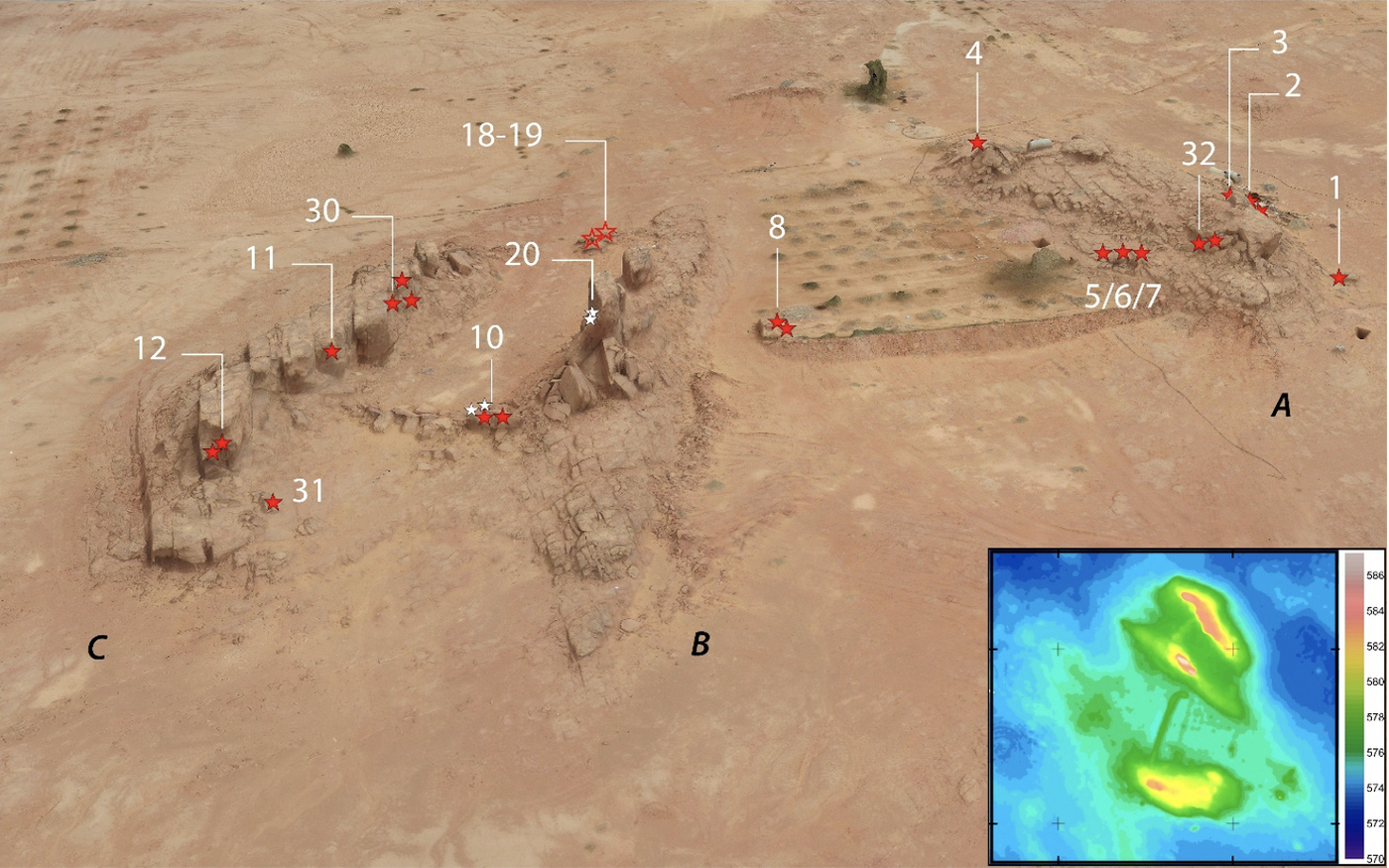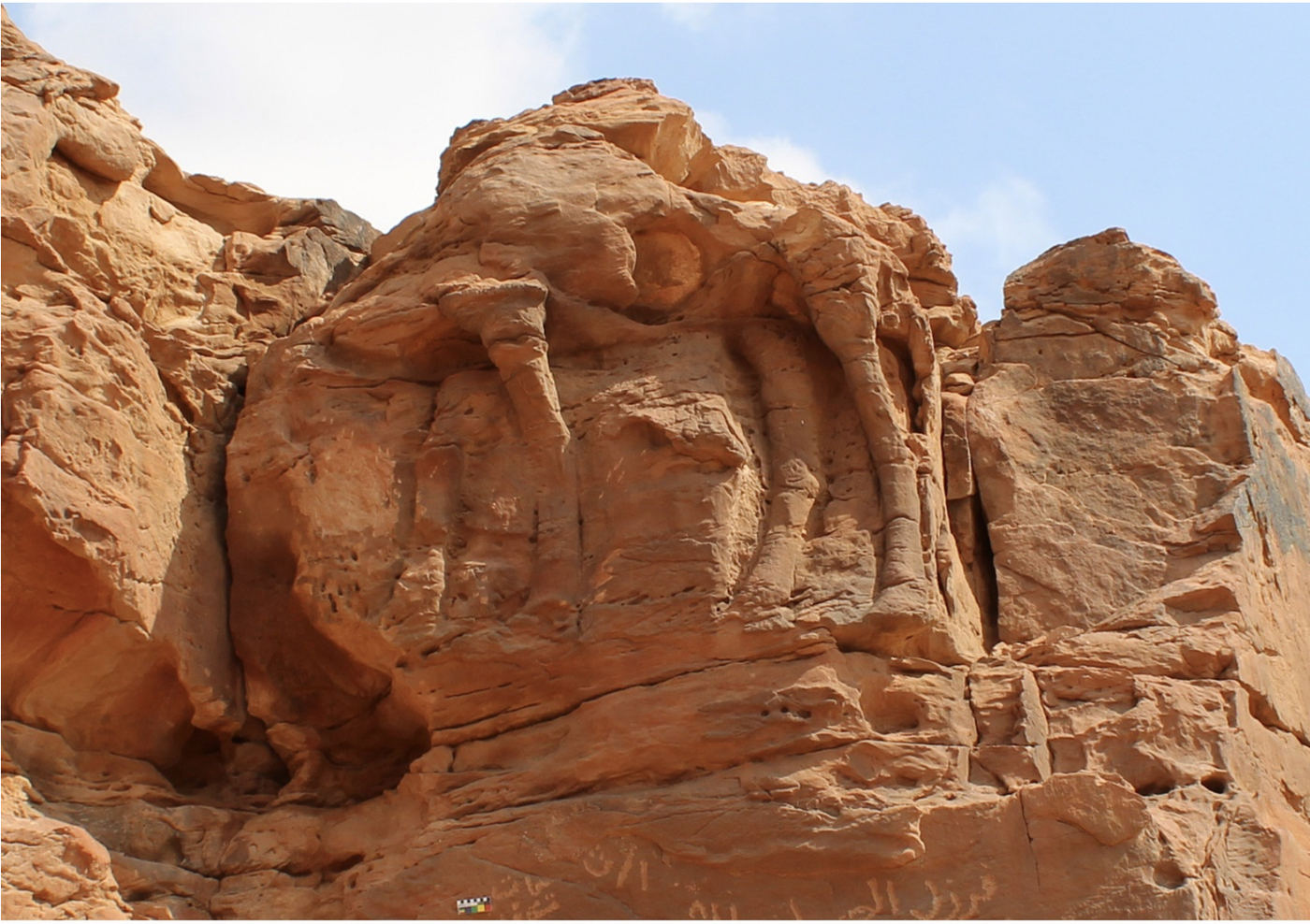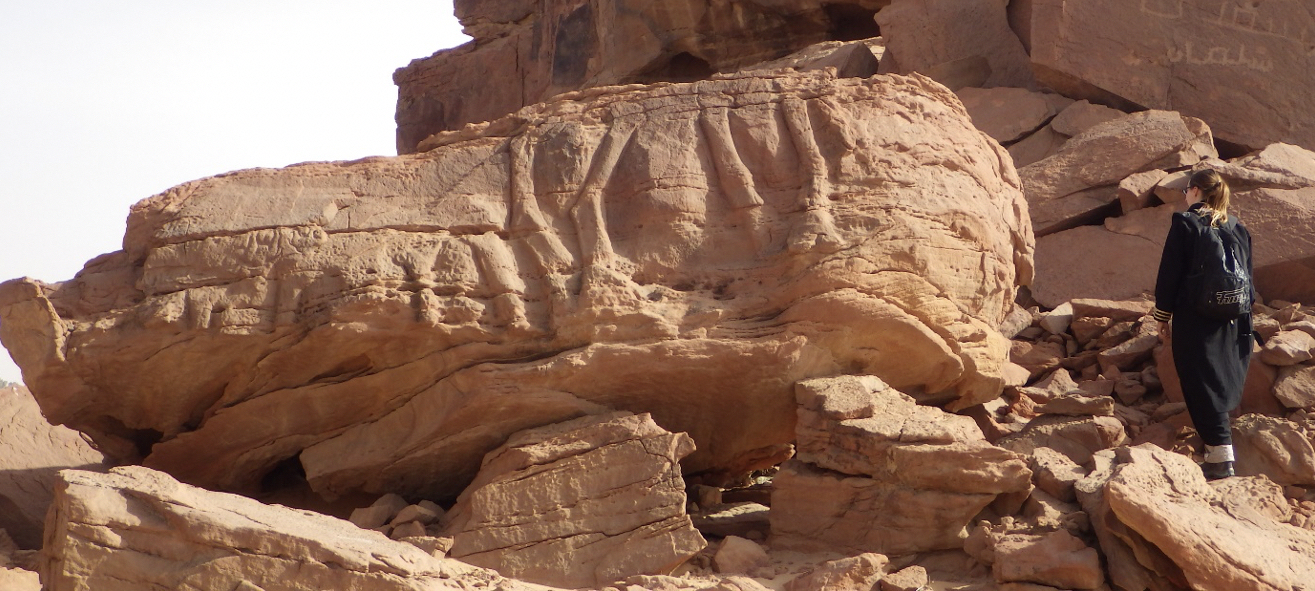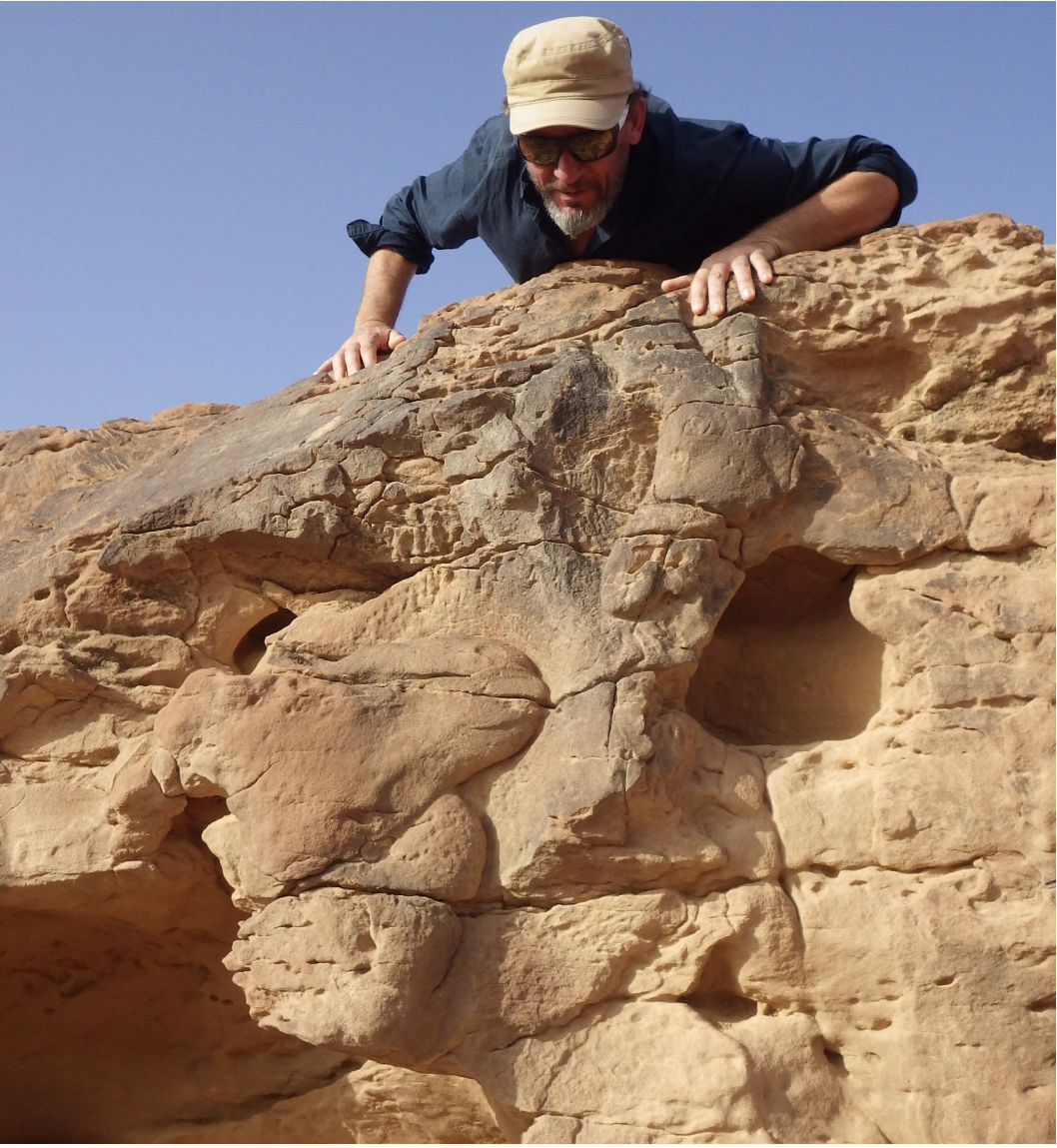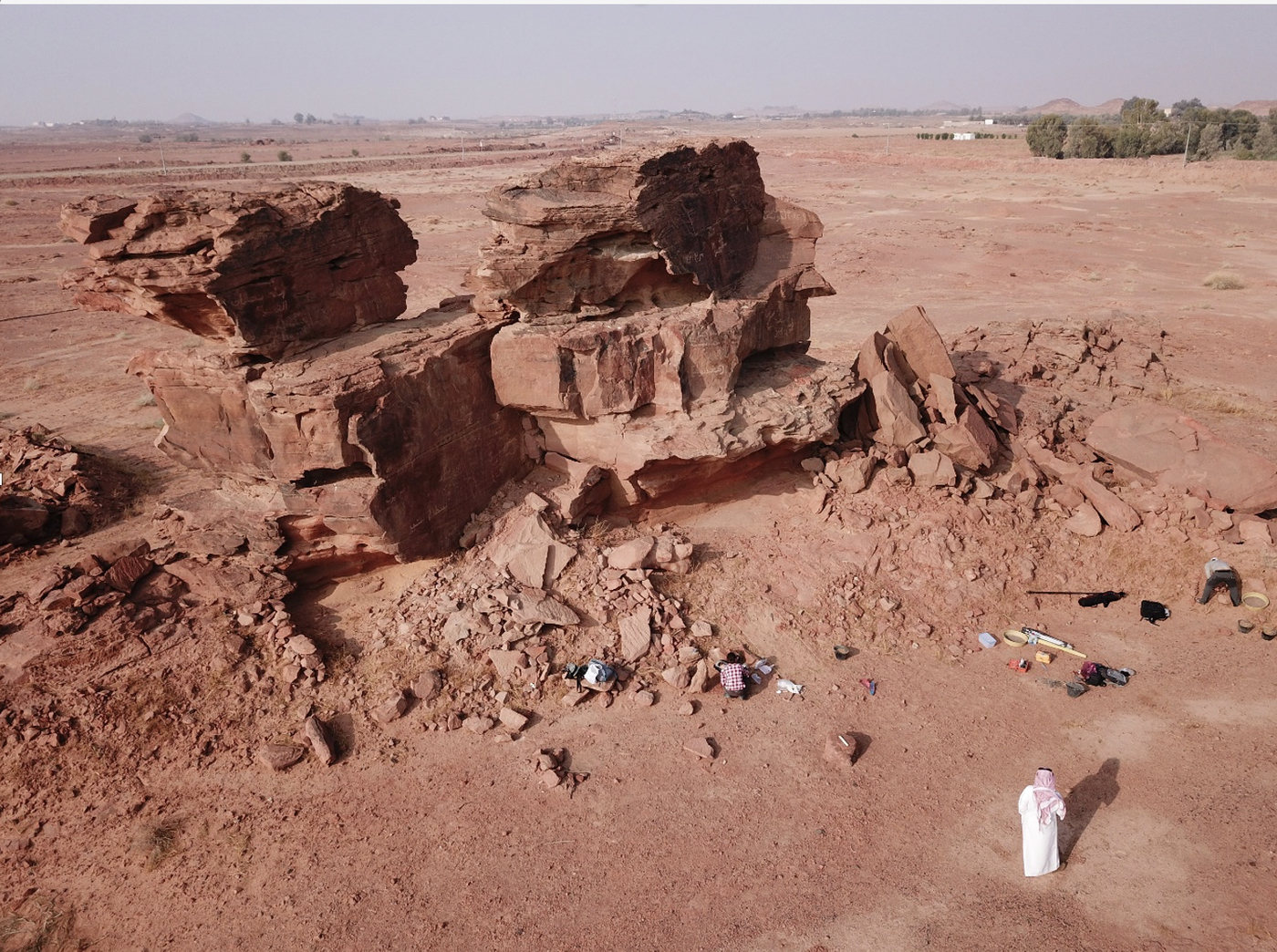Camel Site
Discovered in 2016, it has been studied by a Saudi-French mission since the end of 2018: the objective is to improve our understanding of the archaeological context, dating and function of the site, but also to contribute to its protection.

The recent discovery of the Camel Site, in northern Saudi Arabia, is a blatant proof of the surprises that the exploration of the Arabian Peninsula still reserves.
The best companion of the populations of the Arabian Peninsula
As its name suggests, the site honours camelids, to which the history and socio-economic developments of Arabia are inextricably linked. Used to transport goods in desert areas, or for many needs of daily life (milk, meat, pack, wool, etc.), the camel is above all the noblest and best companion of the populations of the Arabian Peninsula. The Camel Site is, in a way, a tribute from homo sapiens to this fabulous animal. The site is singular in the desert context of northern Arabia both by the technique of representation employed (high and low relief) and by the type of representation unknown elsewhere in the region as well as in the whole of the Arabian Peninsula until now.
The Camel Site
Located in the heart of the Sakaka basin in a desert region north of the Nafud, the Camel site takes the form of three elongated rocky spurs (A-C from south to north) oriented east-west, about 8-10 m high at most, and 70-80 m long. The beige-orange sandstone of the rocks in which the reliefs were sculpted is unfortunately of poor quality, very sensitive to wind erosion and detached by blocks from the façade.
The Camel Site's reliefs
A very dense concentration of reliefs (21 life-size bas- and high-reliefs) has been identified on the walls of the spurs, notably Spurs A and C. The 17 dromedaries and 5 equids (wild ass?) that the site counts today are celebrated in their natural living space, by the hand of man, but surprisingly without his presence or inscription. The animals are generally part of processions, but also of encounters between species and perhaps moments of grazing.
These monumental panels appear to have been carved by different individuals, based on the multiple styles visible. Nevertheless, the carvings share common features such as naturalistic profile representation, detailed depictions of the eyes, nostrils, ears and mouth, and anatomical details such as muscles and leg bones. In addition, the effects of movement and perspective are captured in the depiction of one leg in front of the other, with the legs on one side passing over those on the other side of the animal.
The relief's datation
Although high relief art is widespread in the Near East, the only known comparisons (in terms of size and technique of low and high relief) are the two camel parades of the Siq in Petra from the Nabataean period. This comparison led to an initial hypothesis of contemporary dating to the Nabataean period, which turned out to be erroneous. Our recent investigations have revealed that these reliefs date mostly from the Prehistoric (Neolithic) period, about 7500 years ago. This proposal is based on a series of studies, combining both field data around the reliefs and detailed examinations of the sculptures themselves. A test pit under a relief yielded lithic material from the Final Neolithic period, as well as bones that could be dated by radiocarbon 14. The examination was completed by the OSL dating of the sediments present under a collapsed block comprising a relief, more than 4000 years ago. In addition to these investigations and other surface surveys, various analyses were carried out: a macro study of the cutting of the reliefs (made with stone tools and not metal) and related experiments, dating of the patinas using an XRF portable, extensive stylistic examinations and the search for fragments and tools at the base of the spurs. At the end of this description, it appears that the sculptures from the Camel Site are among the oldest life-size animal reliefs known to date.
The symbolism of the Camel Site's reliefs
Finally, a probable symbolic or even cultic function of the Camel Site is now supported by a series of complementary information: the uniqueness of the site, the impressive size and quality of the reliefs, their concentration on only three spurs, the almost total absence of later engravings, the presence of ancient cupules and grooves traced by hand or with pebbles on the bodies of the animals (notably to recover a powder for medicinal or other purposes) as well as the existence of a tradition of engravings (but not in relief) of life-size and naturalistic dromedaries in the region. These few elements still raise the question: was the Camel Site an open-air sanctuary dedicated to camelids and wild equids? And/or was it a symbolic meeting place for the local prehistoric populations?
Research program
Fieldwork and research were funded by a grant from the Gerda Henkel Foundation (Grant No AZ 43_V_18, to MG and GC), the CNRS (to GC), Labex Resmed ANR-10- LABX-72 / ANR-11-IDEX-0004-02 (to GC), the French Ministry of Foreign Affairs and the French embassy in Riyadh (to GC), the Cefrepa (to GC), the Dahlem Research School at Freie Universität Berlin (to MG), and the Max Planck Society (to MG and MS). AMA acknowledges the support of the Research Center at the College of Tourism & Archaeology, King Saud University, Riyadh, Saudi Arabia.
Links
- The Camel Site's reliefs onsite de Bradshaw Foundation
- UMR 8167 Orient & Méditerranée
Publications
Charloux, G., Guagnin M., Petraglia M., & AlSharekh A., 2022, « A rock art tradition of life-sized, naturalistic engravings of camels in Northern Arabia: new insights on the mobility of Neolithic populations in the Nafud Desert ». Antiquity, 5 septembre 2022, p. 1 9. Link
Guagnin M., Charloux, G. & AlSharekh A., 2022, « Monumental Sandstone Reliefs from the Neolithic: New Insights from the Camel Site in Saudi Arabia ». The Ancient Near East Today X, no 7 (1 juillet 2022).Link
Hilbert, Y. H., Clemente-Conte I., Crassard R., Charloux G., Guagnin M., et AlSharekh A.M., 2022 « Traceological Analysis of Lithics from the Camel Site, al-Jawf, Saudi Arabia : An Experimental Approach to Identifying Mineral Processing Activities Using Silcrete Tools ». Archaeological and Anthropological Sciences 14, nᵒ 5 (26 avril 2022), p. 93.Link
Charloux G. (coord. scient.), 2021, L’art rupestre en Arabie. Une histoire oubliée des peuples du désert. Dossiers d’archéologie n°407, septembre-octobre 2021.
Guagnin M., Charloux G., AlSharekh A. et al., 2021, « Life-sized Neolithic camel sculptures in Arabia : A scientific assessment of the craftsmanship and age of the Camel Site reliefs», Journal of Archaeological Science : Reports.Link
Charloux G., Guagnin M. & Norris J., 2020, « Large-sized camel depictions in western Arabia : A characterisation across time and space », Proceedings of the Seminar for Arabian Studies 50, p. 85-108.
Charloux G., Guagnin M., Alsharekh A.M., 2019, « Il "Camel Site". Rilievi rupestri di cammelli a grandezza naturale nel deserto Arabo », in Alessandra Capodiferro ; Sara Colantonio. Roads of Arabia. Tesori archeologici dell’Arabia Saudita, Electa, p. 63-73 (Ita.) ⟨hal-02500422⟩
Charloux G., Guagnin M., Alsharekh A.M., 2019, « The Camel Site. Rock reliefs of life-sized camels and equids in the Arabian desert », in Alessandra Capodiferro ; Sara Colantonio. Roads of Arabia (Rome), Electa, p. 63-73 (Ang.) ⟨hal-02500392⟩
Charloux G., al-Khalifa H., al-Malki T., Mensan R. & Schwerdtner R., 2018, « The Art of Rock Relief in Ancient Arabia. New Evidence from the Jawf Province », Antiquity 92/361, 2018, p. 165-182 ; Link


